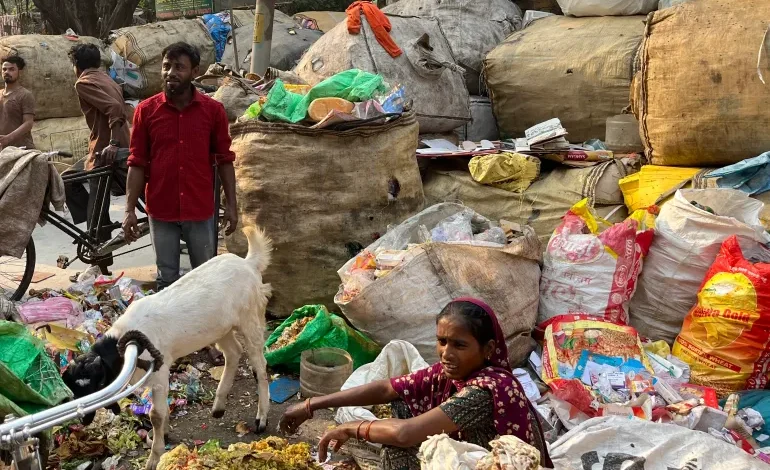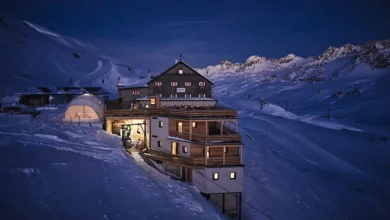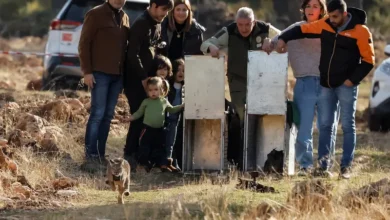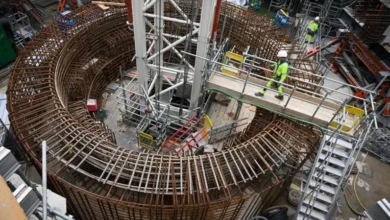‘Death in the Air’: Life in Delhi, the world’s most polluted city

As the toxic smog enshrouds India’s capital New Delhi, Gola Noor pushes the wooden cart loaded with waste with her bare hands to help her coughing husband, Shahbaz, who struggles to peddle the cycle.
Under hazy skies, the couple, barely 40 years old, leave at 6am daily to pick waste in Delhi’s affluent localities. Shahbaz stops peddling to take long, gasping breaths. “Death is in the air,” he says, spitting on the road. “The air tastes bitter and the coughing is constant now.”
His wife, Noor, spent the last night in a nearby hospital due to “excessive itching” in her watery eyes. But she returned to work the next morning with Shahbaz. “Dying of hunger sounds more horrific than dying slowly of suffocation,” she tells Shahbaz, signalling to him to continue peddling. “You are stopping like we have an option [to not get out of the home].”
For nearly three weeks, India’s capital has been swamped by deadly smog — one evening, the Air Quality Index (AQI) hovered over 1,700, more than 17 times higher than the acceptable limit. The smog contains “hazardous” levels of PM2.5, a particulate matter measuring 2.5 microns or less in diameter, that can be carried into the lungs causing deadly diseases and cardiac issues.
The region’s chief minister has called it a “medical emergency”, the schools have been shut, and the visibility on the streets has dropped to as low as 50 metres (164 feet). Yet the nightmarish story of New Delhi’s winters is by now a familiar tale, a deja vu for the city’s residents.Having worsened during the last decade, the months-long spell of intense smog during winter in a city of more than 30 million people translates into severe neurological, cardiovascular, and respiratory diseases, lung capacity loss, or even cancer. It is also changing how people live in the world’s most polluted city, amplifying the social divides in an already deeply unequal society.










